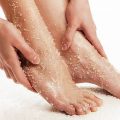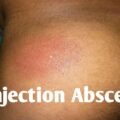What are Anal Skin Tags?
The skin around the anus is relatively loose to allow opening for the passage of stool. It is prone to be stretched by enlargement of the underlying blood vessels. The stretched skin may persist leading to a bump or skin tag.
What causes anal skin tags?
Tags may crop up almost anywhere on the skin. Often, the cause is unclear, but some people may be genetically prone to them.
When skin tags form around the anus, one or more of the following factors is usually involved:
- Friction or irritation. Skin tags tend to develop increases and areas of friction. An anal skin tag may develop due to friction from exercise, prolonged sitting, or tight clothing.
- Diarrhea. Recurrent loose stools can irritate the skin around the anus, as stool is acidic and the area is more frequently being wiped with rough toilet paper.
- Constipation. The skin must stretch to accommodate large or hard stool, and straining can put pressure on the area, leading to bulging blood vessels. If the skin does not return to its original shape after straining or stretching, skin tags can develop.
- Hemorrhoids. These are swollen and inflamed veins in the anus or rectum. Hemorrhoids are common, affecting approximately 1 in 20 Americans. As hemorrhoids heal and the vein shrinks, some stretched out skin may remain, forming a skin tag.
- Crohn’s disease. This is marked by inflammation of the intestines, which can lead to diarrhea and constipation, among other symptoms. A clinical review published in 2008 confirms the higher occurrence of anal skin tags among people with the disease.
Symptoms
Small asymptomatic tags are very common. Larger tags are more frequently associated with swelling, itching, heaviness, hygiene problems, and a skin rash. Itch and difficulty with anal cleaning leading to itch (pruritus).
How to Get Rid of Anal Skin Tags
There are basically two ways of getting rid of an anal skin tag they include:
Surgical Treatment: This removal procedure is also known as sentinel skin tag removal, it is usually carried out as a surgical procedure. This is a minor procedure and is carried out using a local anesthetic. Anus skin tag surgery is a relatively simple procedure using radiowave surgery to carefully and thoroughly remove the skin tag.
Non-Surgical Treatment: Some tags may resolve on their own over time, while utilizing sitz baths and Proctozone 2.5%, a prescription topical ointment. In most cases, however, anal skin tag surgery is required.
Anus Skin Tag Removal Recovery
Given the location of anal skin tags, patients usually expect the recovery process to be worse than it actually is. The first 24 hours are likely to be the most uncomfortable as the anesthetic wears off. However, any pain can be managed using standard painkillers such as paracetamol or ibuprofen. After the first 24 hours it should feel noticeably better, but continue to take occasional painkillers if necessary.
It is important to allow the best possible healing conditions for your skin tag. Depending on where the skin tag is located, you may be advised to sit in a certain way to avoid putting pressure on any wound for a day or two. This will be explained in the consultation before you decide to go ahead with treatment.
You should avoid strenuous exercise for a week to avoid straining the wound although it is important to stay active and a daily gentle walk is recommended to boost your body’s natural circulation and healing.
Cleanliness is, of course, paramount in the anal area. Bathe or shower daily and use a mild salt wash around the wound. Keep a healthy diet high in fiber, fruit and vegetables to avoid any constipation, as any straining in going to the toilet can put a strain on the wound.
After the first week, the initial wound should be healing well.
How to Prevent Anal Skin Tags
This is such a multifactorial answer as it relates to all ailments that can occur anally. However, one answer that is not true is to stop having anal intercourse. Why would anyone ever suggest that to you? The key is to understand the science of both defecation and anal sex with the hopes of minimizing trauma to the region. This will of course decrease the incidence of any associated pathology that may cause anal tags.
Some other ways to help avoid the development of anal skin tags include:
- Regular soft stools through an increase in fiber intake
- Not sitting on the toilet bowl for too long
- Taking standing breaks or working at a standing desk at work
- Doing squats or leg exercises (and making sure to only contract your glutes and not your asshole)
The final suggestion is to see a physician soon after an injury or if the symptoms are persisting. It’s key to see a physician who understands our community and has the knowledge to support appropriate treatments. Early interventions can help with a complete resolution or at least minimize any long term consequences.





